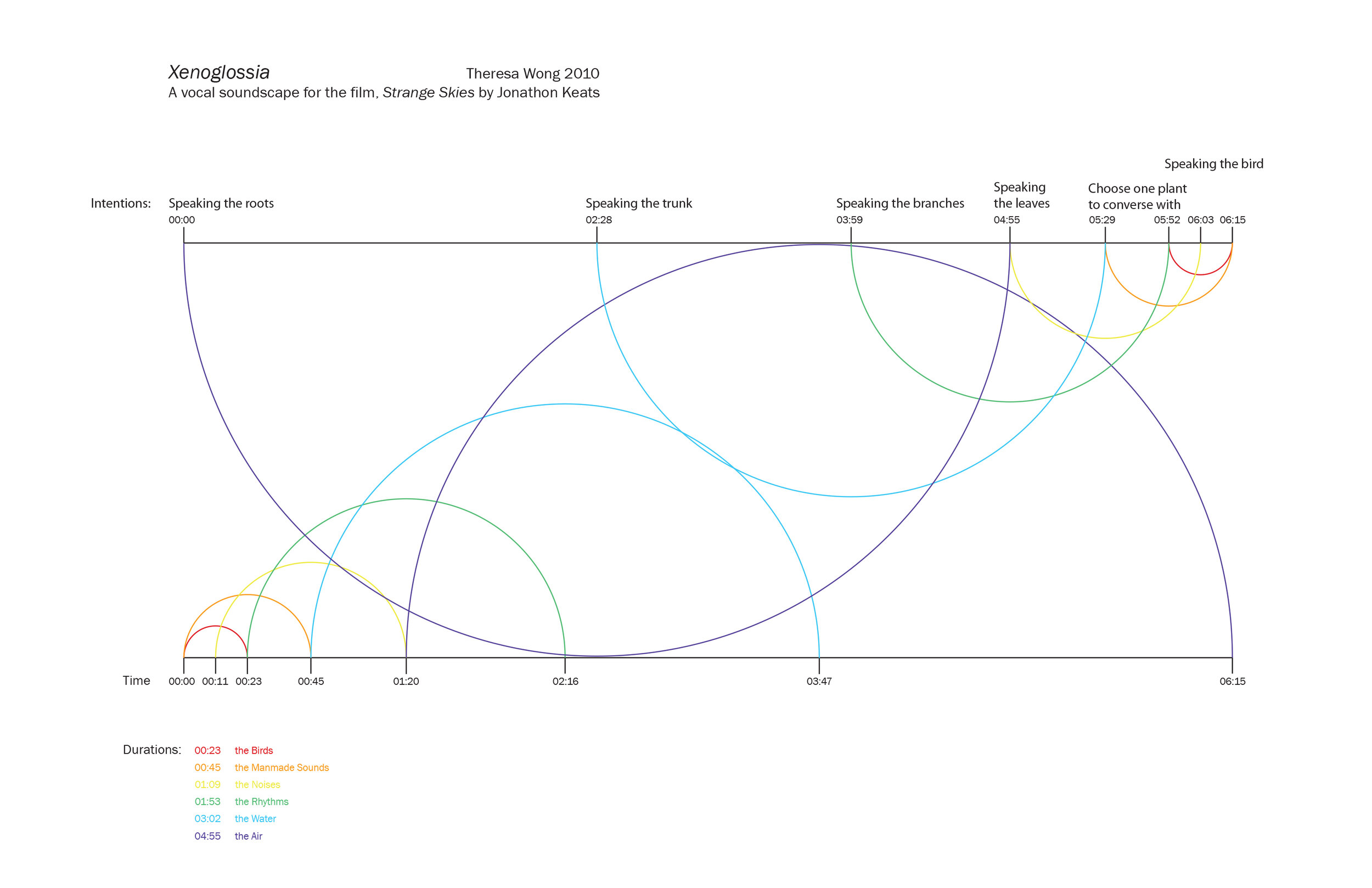Xenoglossia
2010 for multi-tracked and live voice
Soundtrack to Jonathon Keats' travel documentary for plants, Strange Skies
Premiered November 19, 2010 at the Berkeley Art Museum
Performed by Theresa Wong
This work is supported in part through Subito, the quick advancement grant program of the San Francisco Bay Area Chapter of the American Composers Forum
Score for Xenoglossia
Jonathon Keats on Strange Skies:
Plants have roots. As a consequence of this simple fact, they seldom travel. They lack the opportunity to experience the world's vast diversity, and even miss out on the many subcultures and microclimates of their native habitat. Strange Skies is a travel documentary specifically targeted to the plant kingdom, allowing flora to encounter foreign realms vicariously. Given their ability to perform photosynthesis, plants are a natural audience for travel documentaries, especially if the footage is projected directly onto their foliage. This video presents a selection of skies – the ultimate botanical tourist attraction – all filmed in Italy.
The six-minute montage is accompanied by a soundtrack that utilizes the voice, which honors the targeted audience by delivering both a sonic landscape as well as the basic necessity of carbon dioxide. This piece, Xenoglossia, can be played on a loop for the duration of the installation as well as performed live on voice by Theresa Wong with a recorded track of multiple voices. The score is built from proportions of the Fibonacci Series, so commonly found in plant growth. The music consist of abstract tones including vowel sounds, articulated consonants, and cadences which create a vibrational sonic bed intended for the plants. The word ‘xenoglossy’ refers to the supposed paranormal phenomenon of being able to speak or write a language that one has not learned from natural means. The Greek prefix ‘xeno’ (foreign) is also used to refer to species differentiation, as in ‘xenotransplantation’. ‘Glossa’ refers to tongue or language, and so this piece attempts, through sound, to find a way of speaking the language of plants, departing from the artists' usual practice of communicating with the human species.
Since plants perceive light only in aggregate, special allowances have been made to give the documentary verisimilitude. Moving images of clear and cloudy skies are projected onto a translucent scrim which diffuses the picture, streaming subtly changing tints of blue onto the foliage below. For plants, these weather patterns will surely be more edifying than footage of St. Mark's Cathedral and the Roman Coliseum. And since light is also the substance of plants' diets, the documentary will even given audiences a taste of typical Italian cuisine.
